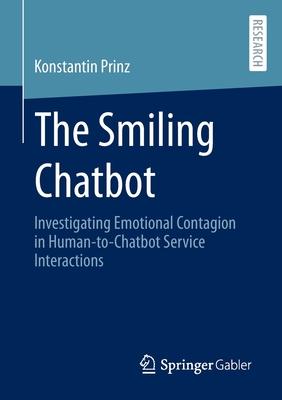Significant advances in the field of artificial intelligence have given a strong tailwind to the spread of technologies based on it. AI technologies are increasingly influencing private contexts but also the service sector where more and more service encounters are handled by chatbots. In part, however, the spread of chatbots and the associated focus on their functional advantages seem to contradict extant research findings that service interactions are also driven by emotional components. A central role is played here by so-called emotional contagion (i.e., the unconscious transfer of emotions from employees to customers). Against the background that this contagion with positive emotions can lead to a better evaluation of the service transaction in the further course, it is the goal of this book to investigate the effects of positive displayed emotions of a chatbot. For this purpose, six consecutive studies were conducted. The results show that the expression of positive emotions by a chatbot enriches the service interactions by transmitting positive emotions that, in the further course, do also lead to a better evaluation of the service experienced. Moreover, it is shown that these emotional reactions are dependent on the customer’s personality and the chatbot’s appearance, expressed through an avatar.
| FindBook |
|
有 1 項符合
The Smiling Chatbot: Investigating Emotional Contagion in Human-To-Chatbot Service Interactions的圖書 |
 |
$ 5999 | The Smiling Chatbot: Investigating Emotional Contagion in Human-To-Chatbot Service Interactions
作者:Prinz 出版社:Springer Gabler 出版日期:2022-12-02 語言:英文 規格:平裝 / 普通級/ 初版  看圖書介紹 看圖書介紹
|
|
|
圖書介紹 - 資料來源:博客來 評分:
圖書名稱:The Smiling Chatbot: Investigating Emotional Contagion in Human-To-Chatbot Service Interactions
內容簡介
作者簡介
Dr. Konstantin Prinz joined the research group Media and Service Management at the University of Koblenz-Landau in 2018. In his research, he dealt with customer-related reactions to emotions in the context of artificial intelligence. Further research interests relate to brand management and corporate communication. After receiving his PhD in 2022, he worked as a deputy professor at different universities.
|











